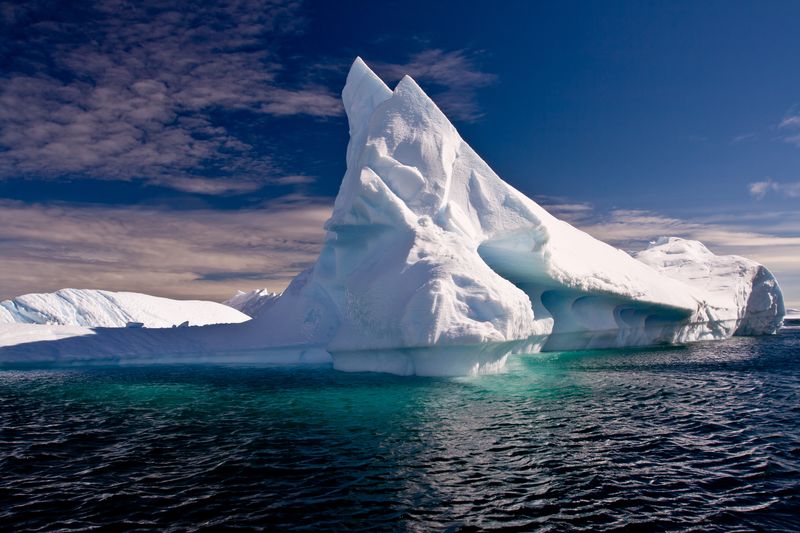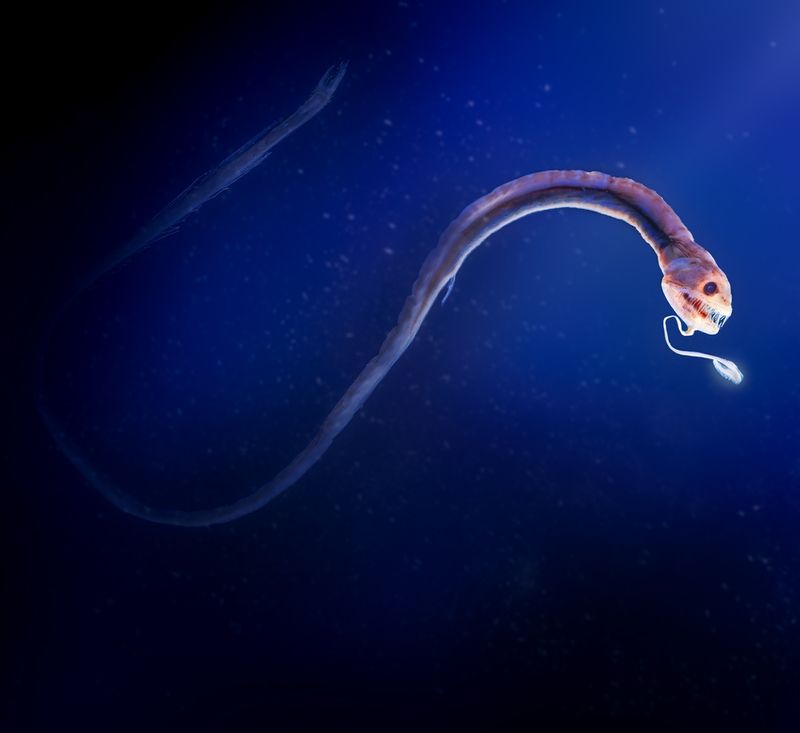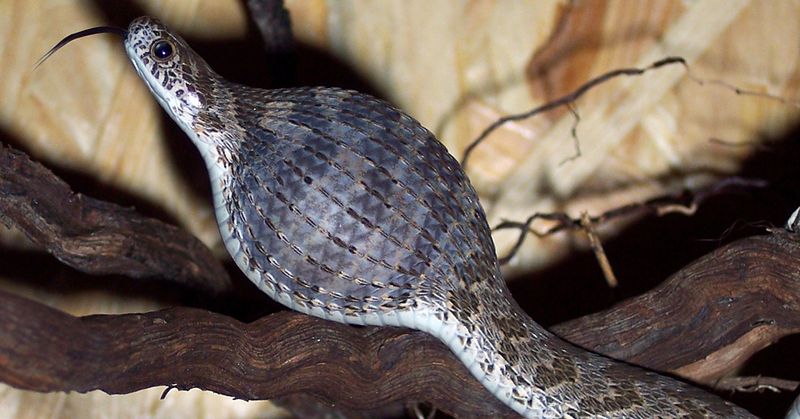Sometimes, in order to predict what might happen in the future, you need to be familiar with what came before. Predicting how our planet responds to the climate changes brought forward by humans is a difficult job – but so very important. One approach that researchers are taking is studying the climate of ages past, by extracting ancient ice from huge glaciers.
For The Big Questions, IFLScience's podcast, we spoke to Dr Liz Thomas of the British Antarctic Survey about how looking back into the Earth’s climate history can help us predict what might come.
Why is it important to drill out ice cores?
LT: Ice cores are an amazing archive of how the planet’s climate has changed and we can use them by drilling down into an ice sheet. They’re effectively a time capsule because you can extract that information and it tells you how the climate has changed, whether that’s looking at temperature changes, or environmental changes like volcanoes. There’s a huge amount of science that can be done just by looking at small amounts of ice from our ice sheets.
How old is the oldest ice that we can get to through these ice cores?
LT: To date, the oldest ice cores that we have ever drilled have gone back just over 800,000 years. There’s a very long core that was drilled called Dome C as part of a European collaboration, and various other international partners have also been drilling deep ice cores.
We know in theory that the ice in Antarctica has been there much longer than 800,000 years. There are places where we know it goes back beyond two and a half million years. At the moment, we have a big international project aiming to try and do exactly that — try and get beyond our longest ice and get beyond a million years.
How do you store the ice and how do you prepare for it to be studied?
LT: The ice needs to be kept frozen, and that can be problematic. We need to have big storage facilities and freezers, that, ideally, keep them below about -25°C. We have some storage freezers where we have the ice that we’re working on at the moment, but because we have an archive of samples we’ve been collecting for nearly 40 years, we actually have to use an off-site freezer facility. We work with the food industry and keep our ice in storage alongside the fish fingers and the frozen peas in an off-site storage facility.
What can we learn from these ice cores when it comes to the past?
LT: One of the most well-known examples is changes in temperature. Our long ice core records have shown us how the Earth has gone through a very natural climate cycle. At the moment we’re in the Holocene, which is this relatively warm period, and then 100,000 years ago we were in an Ice Age. These cycles are called glacial cycles and they’re quite natural; the reason we know that is from looking at something called stable water isotopes.
Within water, you can have oxygen molecules in a heavy form or a light form, and the ratio of heavy to light in the water of the ice core can tell you something about the temperature change. That’s a very simplified explanation, but essentially, this can show us how the Earth’s temperature has varied through time.
You can also see air bubbles within the ice cores. Can they help us to understand the atmosphere of the past?
LT: Yes. Snow becomes more compacted as it gets squished down into the ice sheet and air gets trapped in the form of air bubbles. When we break open those air bubbles inside a vacuum and extract the gases, it can give you information about the exact composition of the air at the time when the snow fell, particularly for greenhouse gases like carbon dioxide and methane.
The vast majority of ice cores are from more recent years. How far back in time can you go?
LT: Any timescale that you want. You can drill just a meter’s worth of ice and the core will tell you what happened just within the last year. Most of the ice that we have in the archive is much younger than the 800,000 years that I just mentioned, but how far you drill also depends on what the research question is. We don’t all want to go and drill back a million years.
Some of the science that we’re really interested in is finding out how the climate and Antarctic ice sheet have changed over just the last 100 years. For most places on the planet, we’ve got really long weather observations that go back hundreds of years, thousands of years even; people didn’t start exploring Antarctica until the 1800s and in terms of robust instrumental observations, they often didn’t start until the late 1950s.
Our understanding of the basic question, “How has the climate changed?” is still unknown. That’s why lots of the studies that we do are looking at a more recent time period and placing it into a longer context. We know that there’s evidence to say that places in Antarctica have been getting warmer in the last 50 years, but what we want to know and what we can answer with ice cores is whether that is unusual.
Is it anthropogenic? Is it human-mediated climate change or just natural variability? That’s what the ice cores over these shorter time periods are really valuable for.
Have ice cores been collected from a lot of different places in Antarctica?
LT: Yes. We’ve got a huge range of ice cores from all across the continent, and various different international groups are all working together in order to achieve this. Antarctica is vast; it’s very deceptive when you look at it on a map. We work on different drilling projects with different people to access as much of the continent as we can, but we are still only scratching the surface because we’ve got relatively few records from such a huge continent.
How deep was the 800,000-year ice core?
LT: It’s close to three kilometers, which is a huge amount of ice and it can take many years to plan the drill. However, when you’re drilling, you drill over multiple seasons. Antarctica, unfortunately, is not a hugely hospitable place to work, so we only have a relatively small time window during the summer months when we can physically be there and drill. Often, for those very deep drilling projects, it can mean going back year after year, for maybe three or four years, to actually reach the bottom.
There are also places where we could drill 1,000 meters and it wouldn’t cover anywhere near as many years, because it depends on how much snow falls each year. You could drill a 1,000-meter core and it may only give you 1,000 years’ worth of data. It depends on your science and what you want to look for.
You are looking at the changes that have happened in Antarctica over both the very recent and the not-so-recent past. How are all those data points being used to model what might happen in the future with the unfolding climate crisis?
LT: This is what’s really important. I have an interest in the climate and how it changed over a long timescale, but I also really want to use that information to help us become better informed about how the climate will change and ideally, make some changes that could allow us to mitigate this.
What the ice cores can do is show us how the planet may change and how it may have reacted in the past. We understand a huge amount about the climate, but it’s actually a very big, complex puzzle, and what we try and do is try and fill in those extra puzzle pieces by saying, in the past, temperatures may have been much higher or much colder, or sea ice may have been much larger or much smaller.
This is the kind of information we can take from ice cores and put into climate models – which are used to predict what’s going to happen next – to understand how the planet behaves in a normal, natural cycle. If it has that as its baseline, then it can start running projections further in time. If that baseline data is wrong or missing, then we don’t know whether what the models are predicting is accurate or reliable.
This is what we provide, almost like calibration, for how the planet should behave under normal circumstances. The climate models can then tell us how it may react in the future with all of the non-natural inputs from humans.
This interview was part of IFLScience's The Big Questions and has been edited for length and clarity. Subscribe to our newsletter so you don’t miss out on the biggest stories each week.




